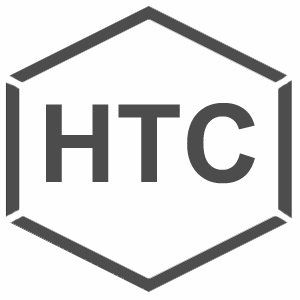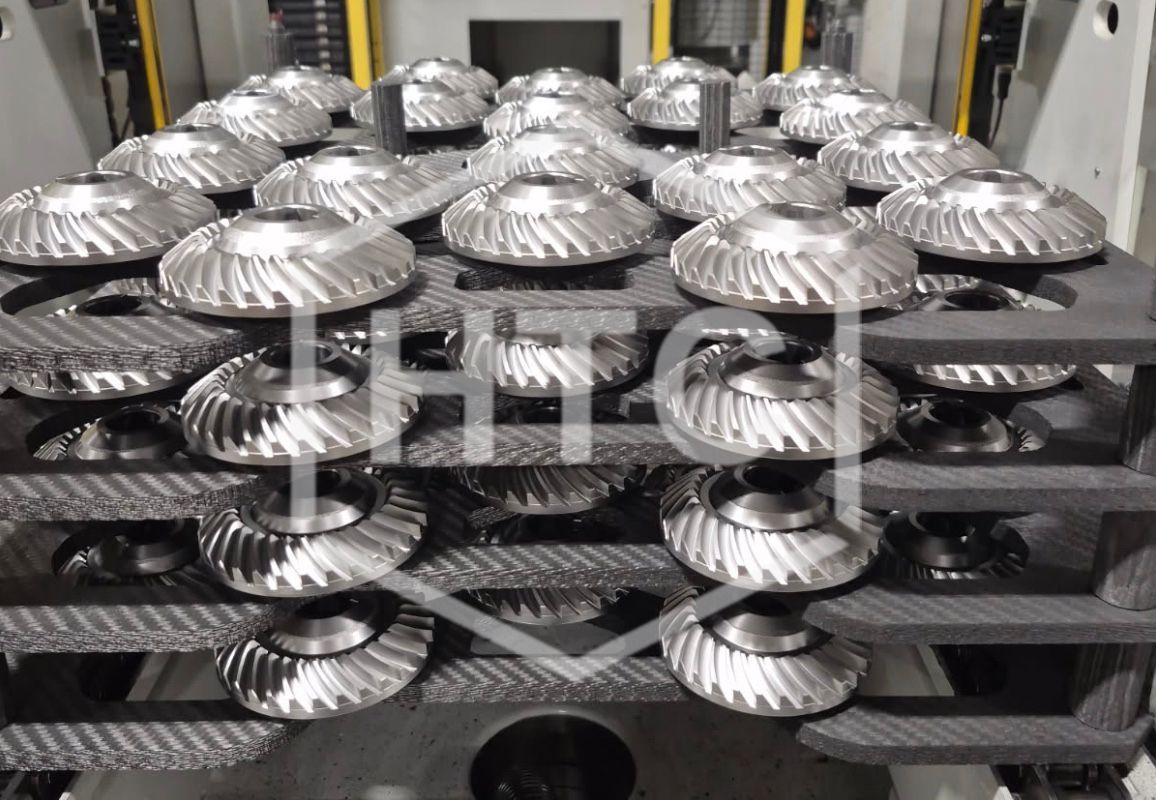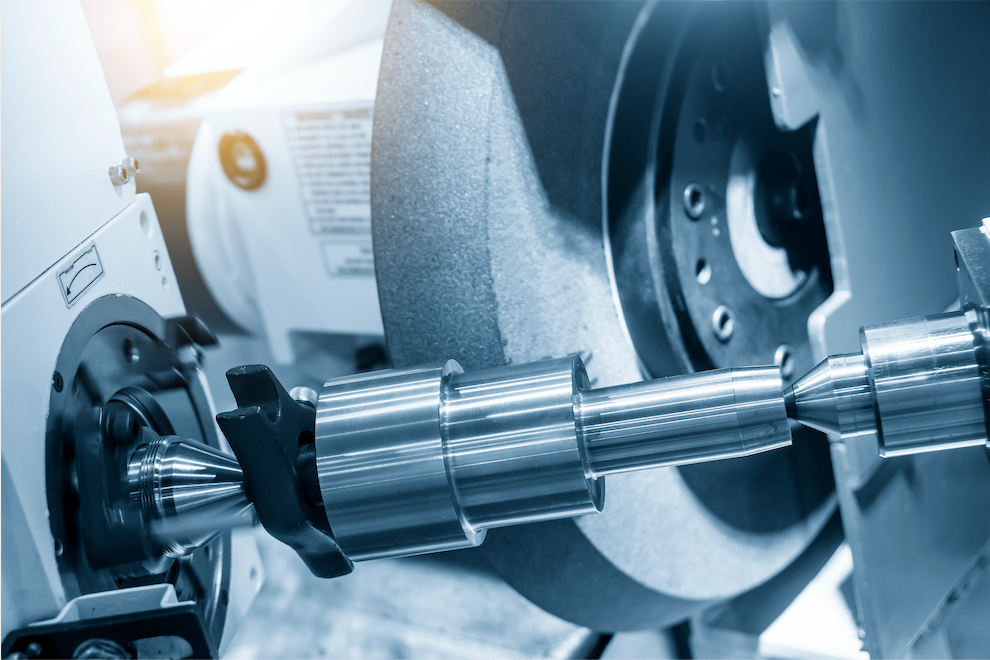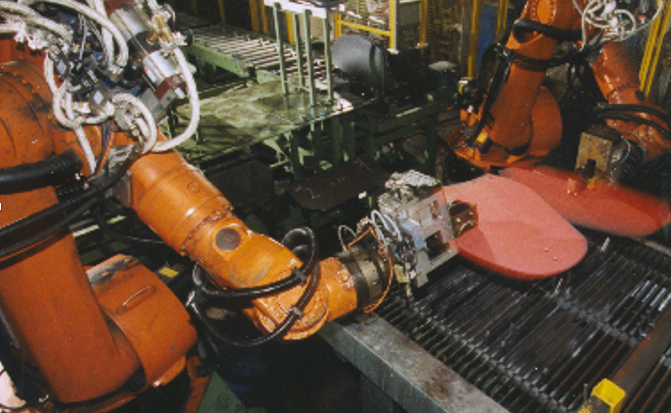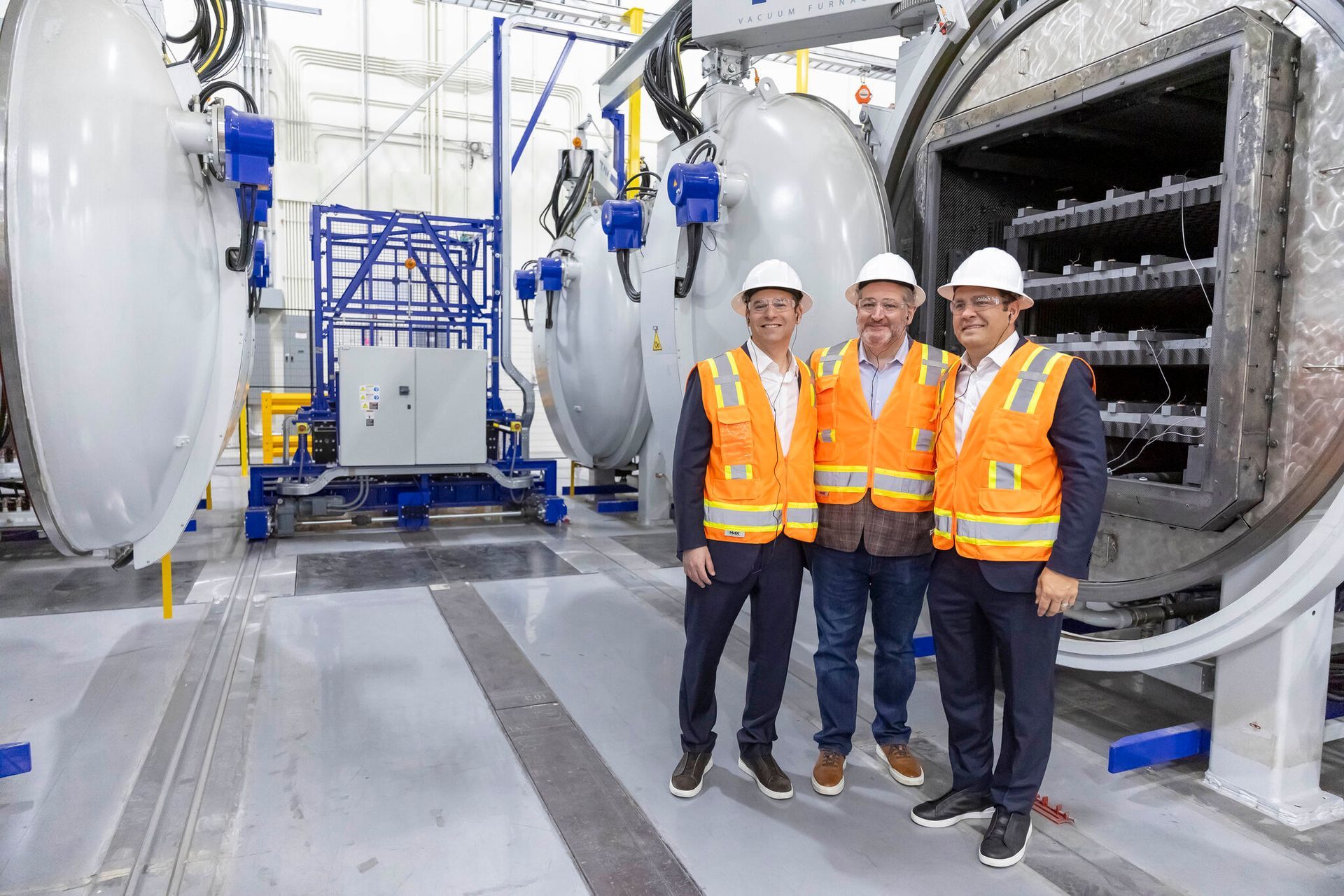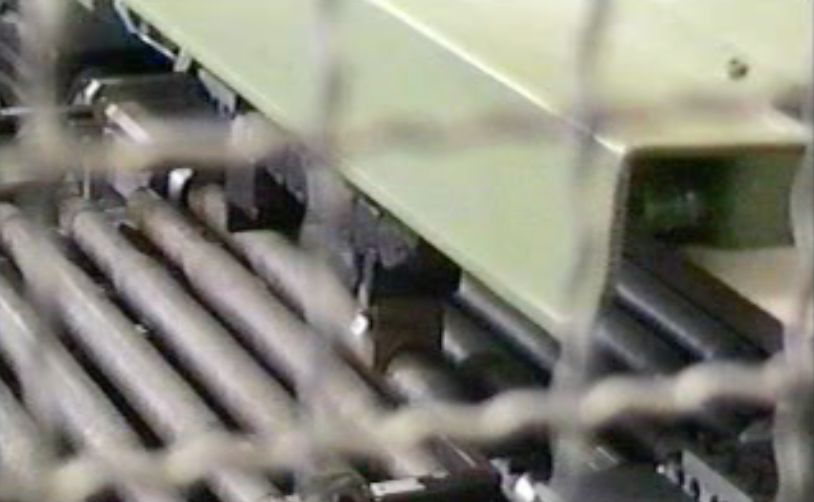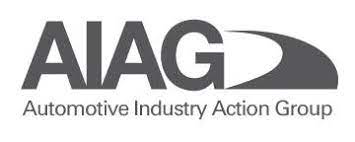Two opportunities seeing you in Louisville on the Furnaces North America
Joerg Demmel • May 22, 2020
At least two opportunities seeing you in Louisville on the Furnaces North America
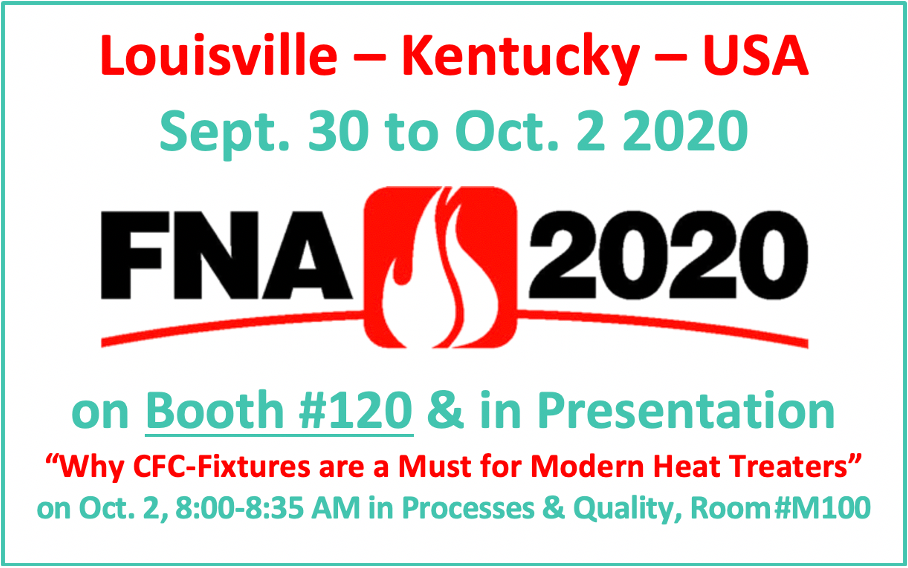
The FNA 2020 Technical Conference Committee under the lead of Mr. Tom Morrison, the CEO of MTI Management and the FNA Producer, is excited to announce, that the presentation “Why CFC-Fixtures are a Must for Modern Heat Treaters“ submitted for consideration, has been accepted as one of the technical sessions to be presented at Furnaces North American 2020 in Louisville, Kentucky this October.
See you in Louisville on Booth #120 and in my presentation.
The presentation you find here as a download:
https://www.high-temperature-concept.com/Publications
Feel free to reach out or explore more at High Temperature Concept to learn how we can help you implement these cutting-edge solutions.

High Temperature Concept designs and delivers best-in-class CFC-Fixtures and Racks for your heat treatment process. We are cooperating with Americarb. ASK FOR CFC-FIXTURES in: ✅ German Engineering Quality ✅ CFC Made in the USA by Americarb ✅ 30 years of experience by myself ✅ short lead times ✅ attractive prices Ask Juan Carlos Contreras Campuzano for your free HTC estimate. Sincerely, Dr. Jorg Demmel
At High Temperature Concept, we’re always striving for most effective and efficient CFC Fixtures and Racks for our customers. There are above all two main preconditions why we can suggest this. First, our founder Jorg Demmel is one of the Pioneers of CFC Fixtures and the only one with a PhD in this field. Furthermore, he and his team developed between 1995 and 2002 in Stuttgart a new generation of Fixtures: A new Technology by German engineers reshaping how parts are handled and treated in high temperature environments . Second, he decided partnering in the field of CFC Workpiece Carriers with Americarb, an US based CFC developer and manufacturer. Driven by the clear idea: Serving American heat treaters best with custom designed CFC Fixtures manufactured in the USA . The result: best-in-class CFC Fixtures and Racks with best Performance, Quality and Prize. Today Dr. Jorg Demmel likes to introduce the 10 Advantages of CFC Fixtures . His knowledge arose over now three decades serving for the industry leaders like Mercedes, Bosch, Rolls Royce or MP Materials, just mentioning a few. We recently came across an insightful presentation by Dr. Jorg Demmel explaining the remarkable benefits of CFC fixtures, and we’re excited to share these insights with you. Whether you’re in aerospace, automotive, or any industry reliant on heat treatment, understanding these advantages can save you time, energy, and money. Table of Contents 1. What Are CFC Fixtures? 2. The 10 Advantages of CFC Fixtures 3. How CFC Fixtures Improve Product Quality 4. Energy Efficiency and Cost Savings with CFC Fixtures 5. Why Choose CFC Fixtures for Your Heat Treatment Shop? 6. Frequently Asked Questions About CFC Fixtures What Are CFC Fixtures? Before diving into the benefits, let's briefly clarify what CFC fixtures are. These are specialized racks and fixtures designed for high-temperature heat treatment processes. Unlike traditional steel baskets, CFC fixtures are engineered to be lightweight, modular, and extremely durable — tailored to improve workflow and reduce operational costs. The 10 Advantages of CFC Fixtures Dr. Jorg Demmel highlighted the ten core benefits of using CFC fixtures in heat treatment applications. Here’s a closer look: 1. Five to 12 Times Lighter CFC fixtures drastically reduce the weight burden on your equipment and operators. Whether modular or monolithic, they are significantly lighter than conventional steel racks — making manual handling easier and opening the door to potential automation. 2. Uses Five Times Less Energy Because of their lightweight design and their increased strength at higher temperatures, CFC fixtures require far less energy during the heat treatment process. This translates to a major reduction in your facility’s energy consumption and costs. 3. Up to Two Times More Net Load Capacity You can load more parts per cycle thanks to the efficient design smaller volume and strength of CFC fixtures. This boosts your throughput without compromising safety or quality. 4. Up to 30% Less Processed Cycle Time Speed matters. CFC fixtures help shorten heat treatment cycles by improving heat transfer efficiency and minimizing downtime — allowing you to process more parts in less time. 5. Five Times Longer Life Cycle Durability is a key factor. These fixtures outlast traditional baskets, meaning fewer replacements, less downtime, and long-term savings. 6. Up to 90% Less Rework Thanks to superior design and material quality, parts handled in CFC fixtures require far less rework, reducing waste and improving overall productivity. 7. Up to 90% Less Product Distortion One of the biggest headaches in heat treatment is part distortion. CFC fixtures minimize this risk, ensuring your parts come out closer to their intended specifications. 8. Automation Friendly With manual handling minimized, CFC fixtures integrate seamlessly with automated systems, boosting consistency and safety. Reason why: CFC doesn’t change dimensions and form in technical vacuum and inert gas atmospheres. 9. Reduced Hard Machining Since the parts suffer less distortion and damage, hard machining steps after heat treatment can be significantly reduced. 10. Enhanced Quality Control CFC fixtures contribute to a more consistent and higher product quality, meeting the stringent demands of industries like aerospace and automotive. The scatter of the measured values for CHD, structure, hardness, etc. in one batch is by experience lower than in conventional steel fixtures. How CFC Fixtures Improve Product Quality When quality counts, the stability and precision of your fixtures are critical. CFC fixtures offer consistent support and spacing for parts during heat treatment, which drastically reduces distortion and defects. This means fewer rejected parts and higher satisfaction from your customers. Energy Efficiency and Cost Savings with CFC Fixtures Energy consumption is one of the highest costs in heat treatment operations. Thanks to their lightweight and thermally efficient design, CFC fixtures help reduce energy use by up to 80% compared to traditional fixtures. This efficiency, combined with longer fixture lifespan, means substantial savings for your shop year after year. Why Choose CFC Fixtures for Your Heat Treatment Shop? At High Temperature Concept, we believe in investing in technologies that deliver real-world benefits. CFC fixtures don’t just promise improved performance — they deliver measurable advantages, including: Lower operational costs Improved throughput Better product quality Reduced environmental impact Switching to CFC fixtures is an investment that pays off quickly and keeps giving back over the long haul. Frequently Asked Questions About CFC Fixtures What materials are CFC fixtures made from? CFC fixtures are crafted from high-quality Carbon Fiber Reinforced Carbon designed to withstand extreme temperatures and mechanical stresses, ensuring durability and reliability. Can CFC fixtures be customized for different parts? Absolutely! Their modular design allows easy customization to fit a wide variety of parts and applications, making them versatile for any heat treatment shop. How much energy can I expect to save? Typically, energy consumption drops by up to 80%, largely due to the reduced mass and improved heat transfer properties of the fixtures. Are CFC fixtures compatible with automation? Yes, their lightweight and standardized design makes them ideal for integration with automated handling systems. CFC is a unique material with a C.T.E. value around zero. The first material I know which allows easy and reliable automatic handling in heat treatment processes. Up to fully integrated material flow solutions between soft and hard machining. How do CFC fixtures reduce product distortion? By providing stable and uniform support during heat treatment, they minimize thermal stresses that cause part deformation. By providing stable and uniform support during heat treatment, they minimize thermal stresses that cause part deformation. The main secret is a design with reduces the fixture volume to a minimum and gives the products optimal chemical, thermal and mechanical conditions during heat treatment. At High Temperature Concept, we’re excited about how CFC fixtures can revolutionize heat treatment operations across industries. If you’re looking to save energy, improve product quality, and reduce cycle times, exploring CFC technology could be the next big step for your shop. Feel free to reach out or explore more at High Temperature Concept to learn how we can help you implement these cutting-edge solutions.
